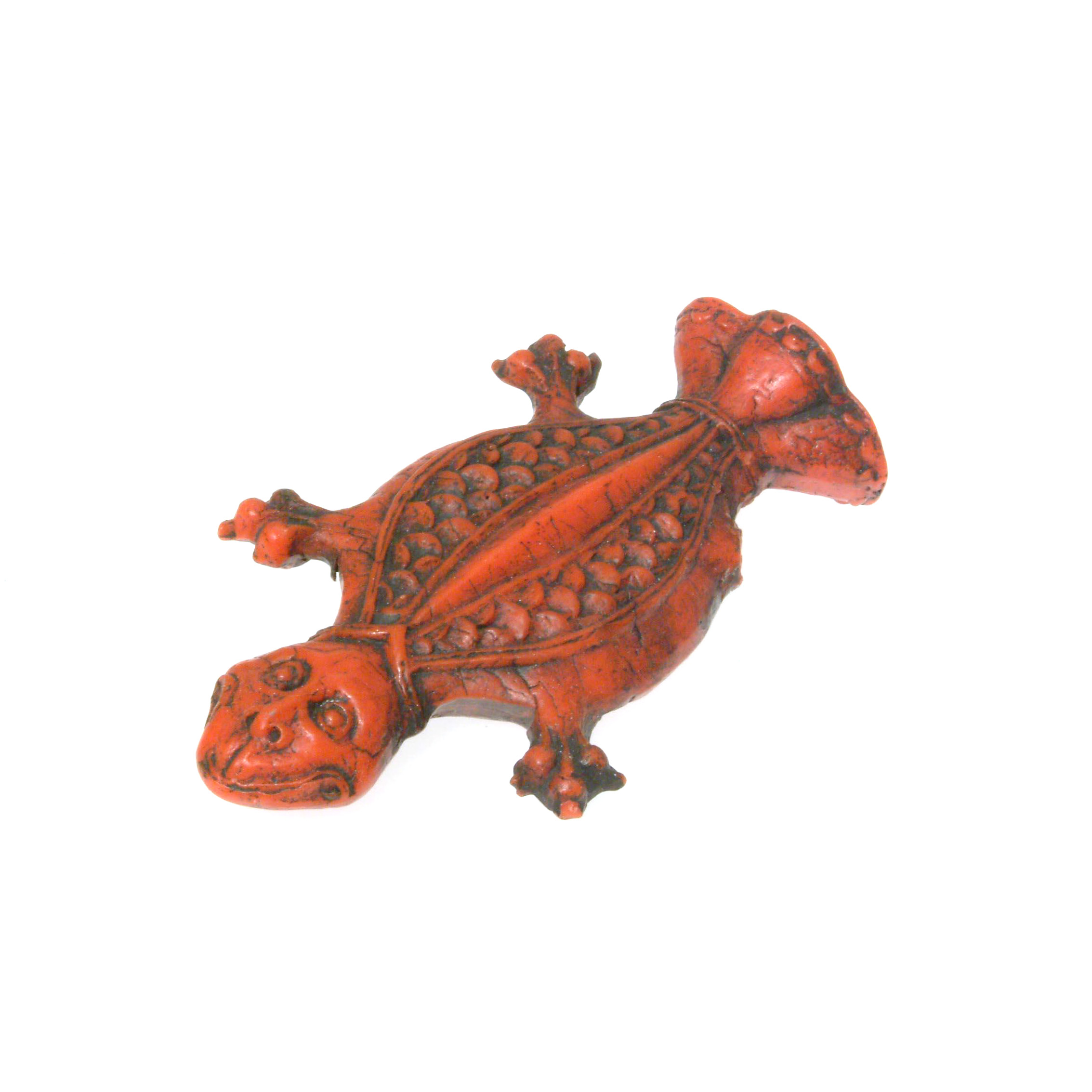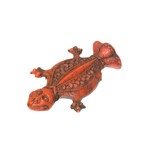Toad
Why did man offer toads as gifts to God
And what else they were used for
In this case, we should really say “woman” not “man”, not due to political correctness, though, but, rather, anatomical accuracy: for votive offerings in toad form have symbolised the uterus since time immemorial. Already the ancient Greek philosopher Plato had the idea that the human womb is not a female organ but an independent living being. If too little attention is paid to it, it pinches and bites and causes bleeding and pain. Up until the 20th century, any Catholic who had severe menstrual pain, suffered from diseases of the female genital area or remained childless unintentionally would sacrifice a toad like this to propitiate the dear Lord or a saint.
In the vast majority of cases, these votive offerings were produced by gingerbread bakers – bakers of Lebkuchen– or chandlers. They were moulded with the help of a wooden casting mould into which hot wax was poured. Very occasionally, one also sees specimens made of silver, wood or iron. Identifying them as toads, however, takes some imagination, because these offerings have more or less human faces.
Most of the specimens have three-toed clubfeet, but especially beautiful pieces even feature finely wrought claws. Another striking feature is the broad, fan-shaped tail – quite un-toad-like – which was used for standing the creatures up on the altar of the pilgrimage church or chapel. In 1929, the folklorist Rudolf Kriß managed to uncover around 130 specimens, mainly in pilgrimage sites in Lower Austria, Upper Austria, Burgenland, Tyrol, Styria, Carinthia and Bavaria. However, for one thing, modernisation as a result of industrialisation and tourism has had an unfavourable effect on old religious customs, and, for another, these sacrifices were considered heathen by many clergymen and were therefore banned from the Church. Thus, only a few pieces have survived, several of them in museums, as in our case. In pictures in churches, too, toad offerings of this nature can occasionally still be spotted.
Toads can do even more
It seems paradoxical that toads were also used for pregnancy tests, back when today’s rapid test procedures had not yet been developed: similarly to frogs, male toads also react when injected with the first morning urine of a pregnant woman. The South American doctor Carlos Galli Mainini was able to show that the animals produce sperm within three hours of injection, which can be observed under the microscope. On our homepage, you can read a relevant paper from 1949.
Although the animals do not suffer any pain or damage in this course of this test, their assistance is no longer availed of today. Nevertheless, you might ask yourself how you can actually tell whether you’re looking at a female or male toad. The author of the study, Ernst Naumann, writes: “We have tried this test on the common toad, Bufo vulgaris. If the male is taken hold of by its sides, it croaks; the forearms are thicker and more fleshy in the male, and the insides of the thumb and the last two fingers have a callus-like, rough skin growth, the so-called nuptial pad, or thumb pad.” https://www.muvs.org/en/bib/document/details/c2657
Hans Hipp: Wachs. Zwischen Himmel und Erde, Verlag Hirmer 2020
Rudolf Kriß: Das Gebärmuttervotiv, Verlag Filser 1929

